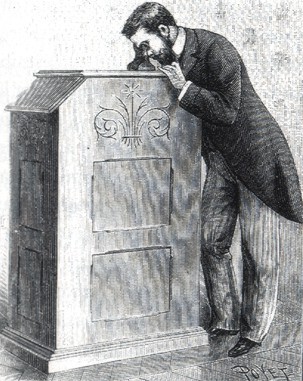Persistence of Vision is the key to
how we perceive movement in animation - or film, video or computer games. With
animation, film video and computer games, each image does not move, but as we
are shown a series of still images all in sequence, with each image being
slightly different to the others, each shown for no more than 1/12th of a
second. Images presented in sequence for such brief periods of time are not
actually understood by the eye and brain, but the brain is tricked into
connecting these images together and reading the sequence as movement.
Persistence of vision has been
around since 5000BC in ancient China. However, the Victorian Age, with its love
of novelty and invention, saw many toys and gadgets that used the process of
persistence of vision.
The Zoetrope
The Zoetrope is a device that creates the illusion
of movement from a series of still images. The zoetrope is a simple method of
creating a short animation from a sequence of still images. It consists of a
cylinder with slits cut vertically in the side, on the inner surface of the
cylinder is a strip with a sequence of images on, each image is slightly
different. As the cylinder spins, you look through the slits at the pictures.
The scanning of the slits keeps the pictures from simply blurring together, and
the user sees a rapid succession of images, producing the illusion of motion.
The Phenakistoscope
The Phenakistoscope was an early animation device
that used the persistence of vision principle to create an illusion of motion.
The method behind the phenakistoscope had been recognized by the Greek
mathematician Eucid and in experiments held by Newton, although it was not
until 1829 that the idea became firmly established by Belgian Joseph Plateau.
Plateau planned it in 1839 and invented the device in 1841. The Phenakistoscope
uses a spinning disk attached vertically to a handle. Around the centre of the
disk was a series of drawings showing phases of the animation, cut through it
are a series of equally spaced radial slits. The user would spin the disk and
look through the moving slits at the disks reflection in a mirror. The scanning
of the slits across the reflected images kept them from simply blurring
together, this way you would get a clear image. This would allow the user to
see a rapid succession of images that appeared to be a single moving picture.
The phenakistoscope can only be used by one person at a time.
The Mutoscope
The Mutoscope was an early motion
picture device, created by Herman Casler on November 21 1894. Similar to Thomas
Edison’s Kinetoscope this did not project on screen and can only be viewed by
one person at a time. This is a cheaper and simpler than the motion device Kinetoscope.
The Mutoscope worked rather like a flip book, the individual frames were black
and white, silver-based photographic prints on tough flexible opaque cards. The
cards are attached to a circular core. One reel holds about 850 cards, giving a
viewing time of about a minute. Mutoscopes were coin operated. The user views
the cards through a single lens enclosed by a hood.
The Kinetoscope
The
Kinetoscope is an early motion picture device. This was designed for films to
be viewed by one person at a time through a peephole viewer at the top of the
device. This works by creating the illusion of movement by conveying a strip of
perforated film sequel images over a light source with a high speed shutter.
This was invented by Thomas Edison in 1888 but was developed mainly by his employee
William Kennedy Laurie Dickson between 1889 and 1892.




No comments:
Post a Comment